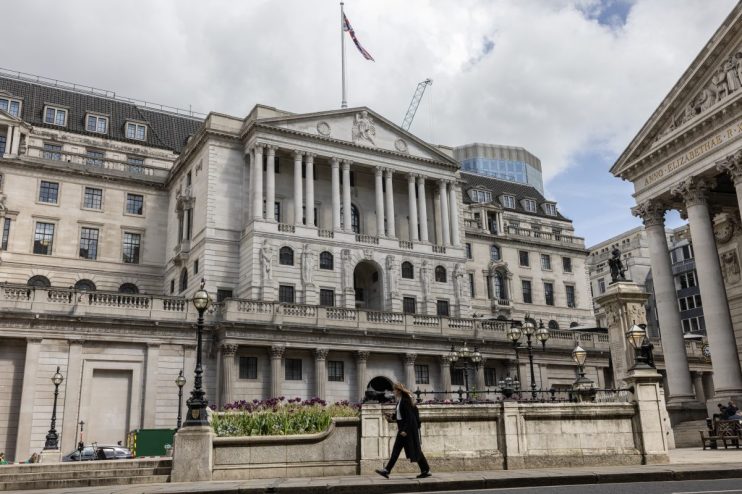Bank of England leaves interest rates on hold with gloomy prospects for UK growth

Higher for longer interest rates will bring growth to a near standstill until the end of 2025, new forecasts from the Bank of England show, as it left interest rates on hold for the second time in a row.
The decision to hold, which was backed by six members of the nine-strong Monetary Policy Committee (MPC) means that the Bank rate remains at 5.25 per cent. Three members preferred a 25 basis point rate rise.
With inflation expected to remain above target until the end of 2025, the MPC said that monetary policy needed to be “restrictive for an extended period of time”.
Andrew Bailey, governor of the Bank of England, ruled out cuts any time soon, saying it was “much too early” for lowering the Bank rate.
“We’ve held rates unchanged this month, but we’ll be watching closely to see if further rates increases are needed,” he said.
Under the pressure of higher borrowing costs, growth will stutter for the next two years.
The forecasts, based on market expectations for interest rates, show that growth will be flat in the third quarter of this year and expand just 0.1 per cent in the fourth, both downgrades on its August forecast.
It then expects GDP to be flat in 2024 and grow by just 0.4 per cent in 2025, both of which were also downgrades.
“As well as the impact of higher interest rates, this reflects a waning boost from fiscal policy and relatively weak potential supply,” the Bank said.
In 2026, it expects GDP to pick up to 1.1 per cent which it noted was still “well below historical averages”. The Bank revised down its predicted level of GDP across the forecast period by around one per cent compared to its previous reprt.
The impact on growth over the coming years comes as the Bank predicts inflation will remain higher for longer.
In September, inflation remained stuck at 6.7 per cent. Although it will likely fall faster than expected over the coming months – largely thanks to falling energy and food places – inflation will remain stubborn across 2024 due to strong wage growth.
By the end of next year, inflation is forecast to be 3.1 per cent before falling to 1.9 per cent by the end of 2025.
This more persistent inflation will primarily be driven by a resilient labour market, fuelling strong wage growth. The MPC said that second round effects in wages “are expected to take longer to unwind than they did to emerge”.
Services inflation, another key indicator of domestically driven inflation, remains near seven per cent which the Bank said was “only slightly weaker than expected”.
Including bonuses, annual wage growth dropped to 8.1 per cent in the three months to September. This was down from 8.5 per cent in the previous three month period, but still means wages are growing at near record pace.
MPC members have previously queried whether the official figures are painting an accurate picture of wage growth, with survey data pointing to a softer rate.
Problems with the data also leaves the Bank with a blindspot regarding unemployment. The Office for National Statistics (ONS) recently published “experimental” data, which suggested unemployment was slightly less than expected.
The Bank said there were “increased uncertainties” around the ONS data and was “continuing to consider the collective steer from a range of indicators”.
Nevertheless, the MPC felt there were signs that the labour market is loosening, and forecast that unemployment would rise to around five per cent by the end of 2025.
Today’s meeting comes after a knife-edge decision in September, when the MPC backed a pause by the thinnest of margins in a surprise decision.
The Bank’s decision follows decisions from both the Fed and the European Central Bank to leave rates on hold over the last couple of weeks.
All three central banks have left rates on hold for the first time since the end of 2021, signalling that central banks are entering a new phase in the fight against inflation.